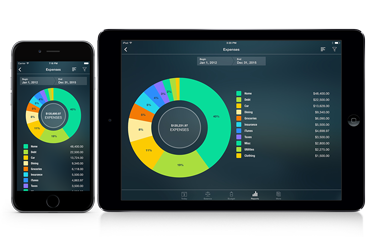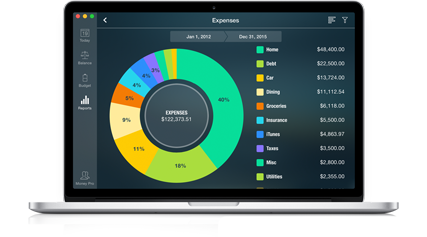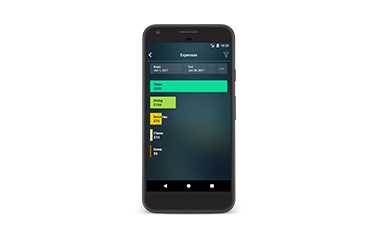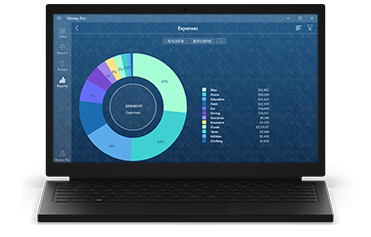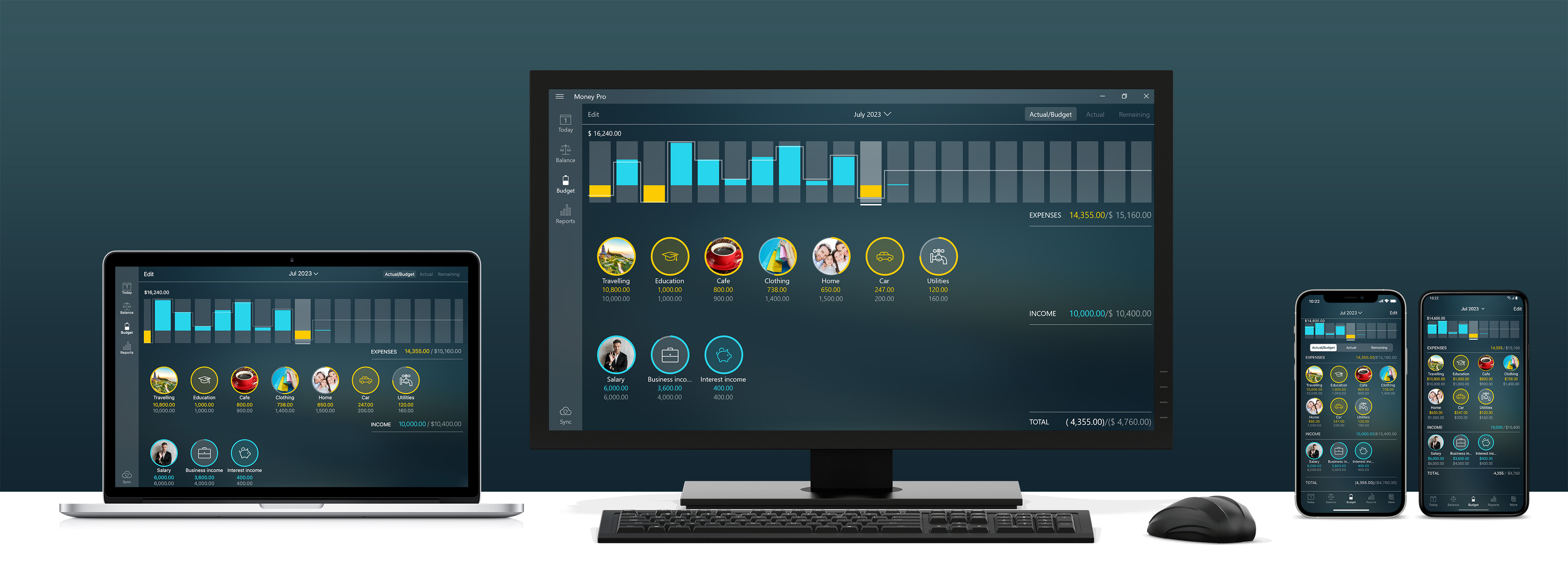
Money Pro - budget for a freelancer
By Julia on Monday, May 25, 2020
This article is for those who receive income irregularly: freelancers, contractors, bloggers and so on. When income comes in a certain amount once or twice a month everything is more or less clear with the budget. But when your earnings can reach three average monthly wages in one month and almost fall to zero in another you need to somehow learn how to distribute your income efficiently. In this case, a financial assistant, such as Money Pro, is simply irreplaceable.

WHAT TO START A BUDGET WITH AND WHAT IS THE MOST IMPORTANT?
In such a situation, the first thing to clarify is your living wage. Here we would recommend that you start calculating it right away. Open Money Pro on the Budget tab and let us calculate.
1. Add categories for living expenses to your budget: rent, utility bills, loans, groceries, travelling costs (we offered a detailed living expenses list in the previous article, Secrets of budgeting).
On the Budget tab, tap Edit in the upper right corner and select the category you need in the Expenses section. Fill out the form that opens: amount, frequency (Monthly), beginning and end dates (the default values should be suitable for you - from the 1st day of the month), select a currency. Tap Save, Done.
Carefully think of other costs you can’t do without. For example, it may be costs for a hairdresser or a cosmetologist, if your job requires looking well-groomed.
Add one more category to the resulting list: emergency fund. This is an amount for unforeseen expenses. Those are no global expenses for “sudden disasters”, but small ones like expenses for medicines or minor apartment repairs.
Remember the resulting total. This is your living wage. In order to sleep with a clear mind, your bank account (savings, cash) must have a sum of money that exceeds it three times.
So, if the amount of mandatory costs is $3000, then the amount on your bank card should be $9000. Too much? Not at all. In case your income is sporadic and you may suddenly go into dry dock, you must have an adequate rainy-day fund that will help you get through difficult times. Thus, you will not only protect yourself from stress but also give yourself enough time to make the right decision regarding your future activities.
And remember: no loans during low income! No credit cards! No credit for everyday life! Otherwise, you will get a taste of living in debt all the time and lose all the control over your finances.
So, if the amount of your mandatory expenses is $3000, then in the Income section you will need to have a category with a no lesser amount.
2. Add the remaining expenses: clothing, sports, entertainment and others. Try to determine an approximate amount for each category. You can always adjust them later based on the experience of cost accounting.
The total amount is the budget that you need to target your income and expenses for.
Let us suppose that the total with the remaining expenses amounted to $4400.
PLANNING COSTS IN THE CALENDAR
In order to better control your expenses, we recommend having two separate bank accounts. You will use one only as a rainy-day fund. The second account is for generating income and making ongoing expenses.
So, you have planned the total expenses for each category (and subcategory) and you know how much money you need for a month. The next step is creating planned costs on specific dates. Now you create transactions in the app exactly on the dates when you will need to make those payments. Remember to use the same categories you have chosen for the budget.
To do this, open the Today tab. You can add each new transaction by tapping “+” in the upper right corner. Select the category you want, then tap the date in the transaction form and select the one when you plan to make the payment. This transaction will appear on the Today tab on the scheduled date and you will only have to tap it once to mark it as Paid.
If a planned transaction is recurring, then in the transaction form after setting the desired date, tap Repeat and specify its frequency (every month, every week, etc.). Thus, instead of creating it every month you add it to the app only once.
Add ALL the expenses that are included in your living wage.
Now open the Calendar (on the Today tab, tap the date at the top of the screen) and see how many dates on the calendar are marked with empty dots - these are the dates of your scheduled payments for the current month. Deselect the today’s date and below the Calendar there will be a list of planned payments. You can move around the Calendar by swiping right or left.
Now you know not only HOW MUCH your living wage is, but WHEN you must pay the bills. How important this is, we will see when distributing income.
HOW TO DISTRIBUTE INCOME?
Add the planned revenues that you expect in the near future. You can add them in the same way as planned expenses - on the Today tab, choosing an Income transaction instead of an Expense transaction.
Let us look at two examples.
Example No. 1.
Revenues of the current month will exceed the amount of the targeted budget. In our case, your income will amount to more than $4400.
Suppose you are working on two projects to be paid for on certain dates of the current month. The revenue of the first project which will be received on the 7th is $1500 and the revenue of the second project is $3500 expected on the 25th.
It turns out that the total income amount this month will be $5000. It exceeds your targeted budget by $600 and the living wage by $2000.
It seems to be fine, but there is a small BUT! When you look at the Calendar, it turns out that $2000 of your living wage must be paid by the 20th, of which $300 are to be paid on the 3rd. Revenues will cover only $1500 of this amount by that time. Thus, at least $500 must be on your savings account in order to pay your bills on time.
For now, let us suppose you have such an amount on your savings account. Transfer it to your checking account (in Money Pro use a Money Transfer transaction) and continue to plan further. So, by the 20th you’ll pay the bills for $2000 out of $3000. You will have to pay another $1000 to cover the living wage costs and and you can spend $1400 (to reach the targeted budget) at your discretion. $1400 will be paid out of $3500 (second income part). In addition, you will need to transfer $500 back to your savings account. In Money Pro, use a Money Transfer transaction as well.
You are given a choice now how to distribute $3500 income. You can:
- cover the remaining expenses of the targeted budget $1000 + $1400 = $2400, return $500 ($2400 + $500 = $2900) to the bank, and also spend, say, an additional $300 since this month was successful, in this case, you will put only $300 on your savings account ($3500-$2900-$300=$300);
- cover the remaining expenses from the targeted budget $1000 + $1400 = $2400, return $500 ($2400 + $500 = $2900) to the bank and put all the remaining $600 on the savings account ($3500-$2900=$600);
- cover the remaining expenses for the living only ($1000), return $500 ($1000 + $500 = $1500) to the bank, and put all the rest ($2000) on the savings account ($3500-$1500=$2000).
If you were not going to take control of finances into your own hands, you would probably choose option A and continue to hope for future income. However, having set a goal to manage money, you simply have to choose either option B or C. Since your immediate goal is to have an amount three times your living wage in your bank account, and in this case it is $9000.
You may have to restrain yourself from tempting purchases for several months, going to a cafe or something expensive, but your rainy-day fund will be fully formed, which means you can fully concentrate on the quality of your work, rather than on its hectic search.
Moreover, you will feel proud of yourself because you have managed to achieve your first financial goal - the necessary amount in a bank account in order to keep calm with an irregular cash flow.
Now all that remains is timely adjusting the size of the rainy-day fund. If the rent for your apartment has grown one and a half times, then the amount in the bank should be increased accordingly.
You need to save up for any other purpose (a car, a mortgage, a vacation trip) additionally to the already accumulated amount.
Example No. 2.
Let us imagine that the revenues of the current month are less than the living wage. That is, you will receive less than $3000.
Suppose that you will receive the first income on the 10th and amount to $1000, and the second - the 20th, and will be $1800. The total income will be $2800.
According to the calendar, by the 10th you will have to pay $1800, and by the 19th - $1200.
On the one hand, the targeted budget amount is lacking only $200 - not a big deal. On the other hand, your account should have $2000 to pay all bills on time. And this changes things completely, right? That is pretty unpleasant, but not that bad considering that you will put $1800 back on the 20th.
Therefore, it is necessary to know exactly not only your living wage, but also the dates of all mandatory payments. In case of irregular income, it is recommended to make planned payments for the whole year in advance in the app.
Only with this kind of planning will you be able to avoid unpleasant surprises. Over time, you will no longer depend directly on the current income - the necessary amount for the targeted budget will already be in your bank account.
SUMMARY
Let us recap all of the above. In order to manage finances with irregular income it is necessary to follow the rules:
-
Make two budgets for a month: living wage and a targeted budget. The living wage is all the mandatory expenses of one month.
-
Plan all costs of the living wage for specific dates.
-
Distribute income in advance, taking into account its total amount and dates.
-
Accumulate a sufficient amount of money for the rainy day. It should be at least three times the living wage.
-
Do not take loans for everyday expenses.
-
Constantly grow your expertise and look for new sources of income.
Now pick up the phone, open Money Pro and … Start!
Make sure to follow us on Facebook, X, and Instagram to stay updated.

